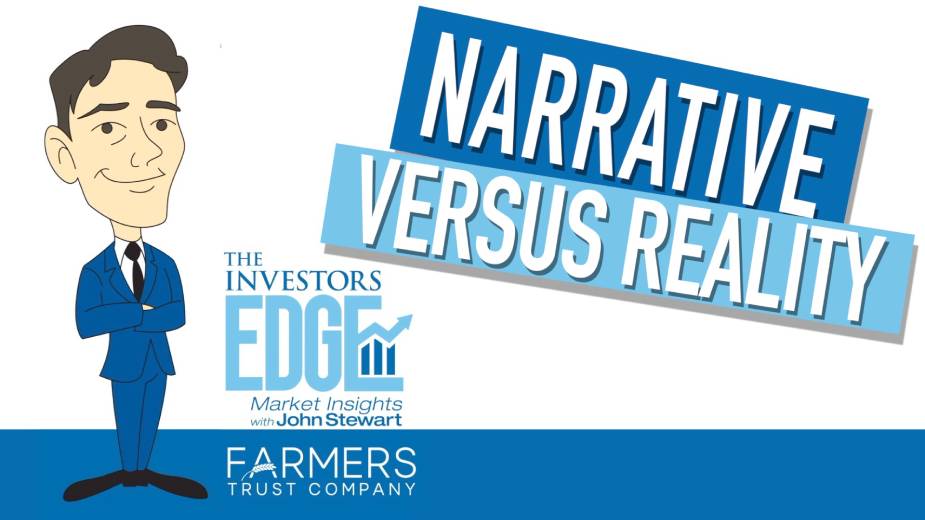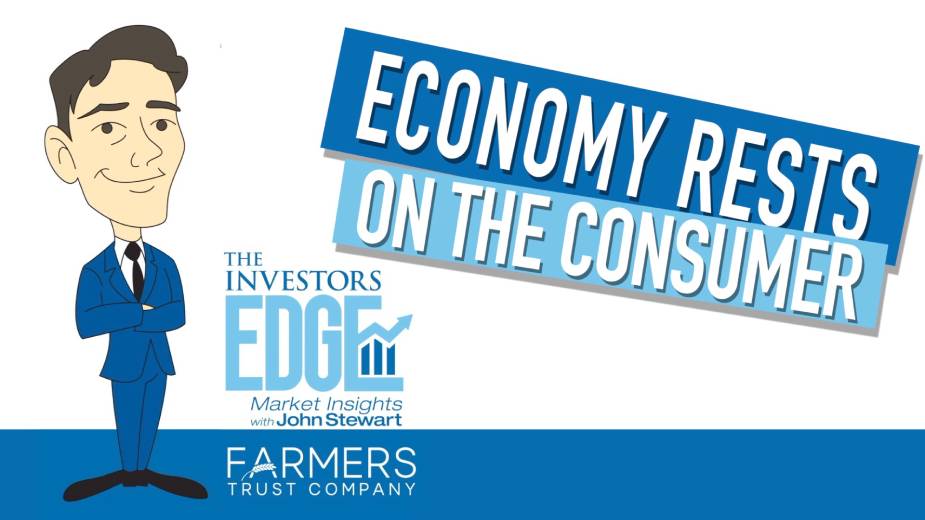Recession on the Way? | The Investors Edge
By John Stewart, chief investment officer at Farmers Trust Co.
Week in Review: Recession on the Way?
CANFIELD, Ohio — Calls for a recession have reached a fevered pitch in recent days with many economic forecasters saying the chance of having one in the next 12 months is roughly 50 percent.
The definition of a recession is two consecutive quarters of negative real GDP growth. In other words, a 6-month (or longer) period in which total economic output shrinks net of inflation.
The economy shrank 1.7% during the first quarter of this year, and it is certainly possible the current quarter that ends next week could fall on the wrong side of zero – so we may already be in “recession” according to the technical definition.
Whether or not we have a recession based on the accepted definition is really quite inconsequential from an investment perspective. For one thing, it usually makes sense to be buying stocks in the middle of the recession. If you wait until it ends, you will have missed out on substantial upside in the markets.
More important is the question of whether things are going to get worse before they get better, especially when it comes to corporate earnings. While the jury is still out on that question, the risk may be to the downside, at least in the near-term.
Featured Insight: Risk Not Always What it Seems
Most investors attempt to avoid risk – this makes complete sense as risk implies potential loss of capital.
Nevertheless, risk is not a straightforward concept as it pertains to investing.
Some of the investment opportunities that SEEM to be the most risky, may in fact have much less risk than meets the eye. Why? Because investments that are broadly perceived as risky by the investing public tend to trade for deeply discounted prices. And buying at an attractive price is the single biggest determinant of investing returns.
On the other side of the equation, many investments that are perceived to have little risk, or that investors feel a strong degree of comfort owning, may actually be the most risky.
Think about it. Stocks that everyone loves, and that investors think can do no wrong, tend to trade at very high prices. And there’s nothing riskier than paying too much for an investment, even if the underlying business is good.
Look no further than many of the market darlings of the past several years. Some of the most popular and well-regarding companies like Amazon and other technology companies have been the hardest hit stocks so far this year. They simply became too expensive – and expensive is risky.
Looking Ahead: Second Quarter Set to Close
Next Friday will bring the second quarter of 2022 to a close, and along with it one of the worst first halves to a calendar year in financial market history.
Large institutions, many exchange-traded funds, and retirement portfolios usually rebalance their holdings at the end of each quarter.
This tends to create some extra volatility in the closing days of each quarter, and given the elevated volatility we’ve experienced all year, next week could provide plenty of whipsaw for investors.
What makes this rebalancing opportunity (or lack thereof) unique is that both stocks and bonds have lost value this year, making it challenging to sell outperforming assets (there aren’t many) while purchasing underperforming assets.
On the whole, bonds have outperformed stocks, so the rebalancing could provide some flows into equities, and a near-term lift for stock prices.
Copyright 2024 The Business Journal, Youngstown, Ohio.


